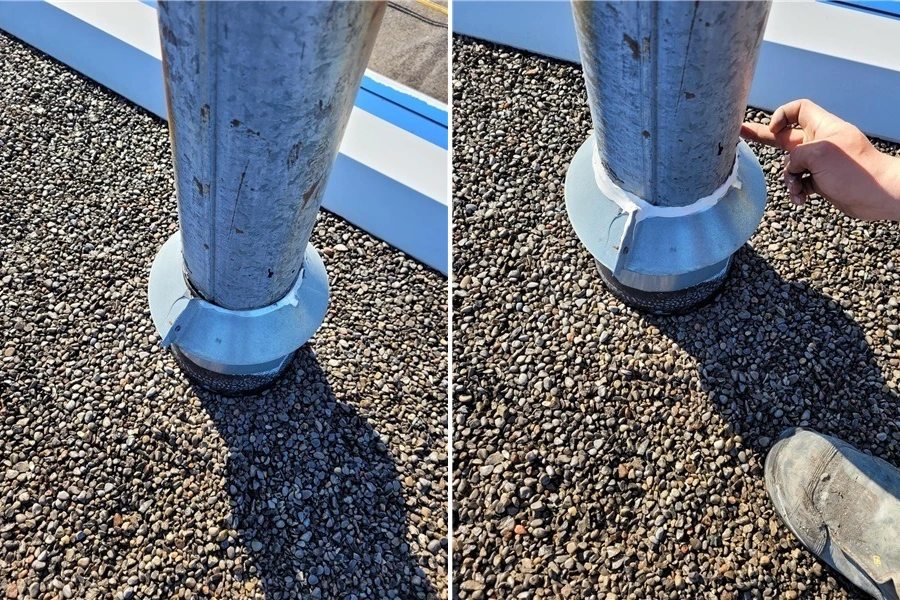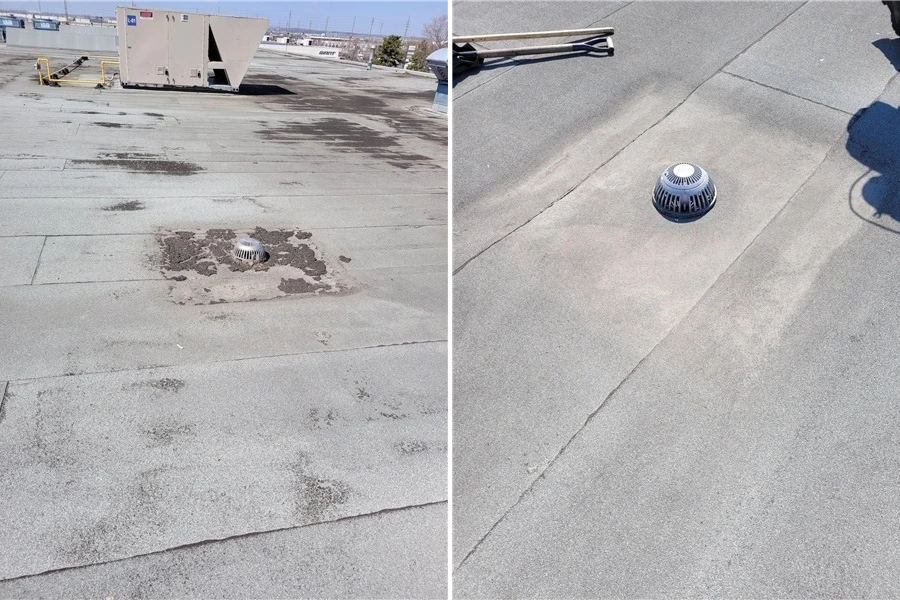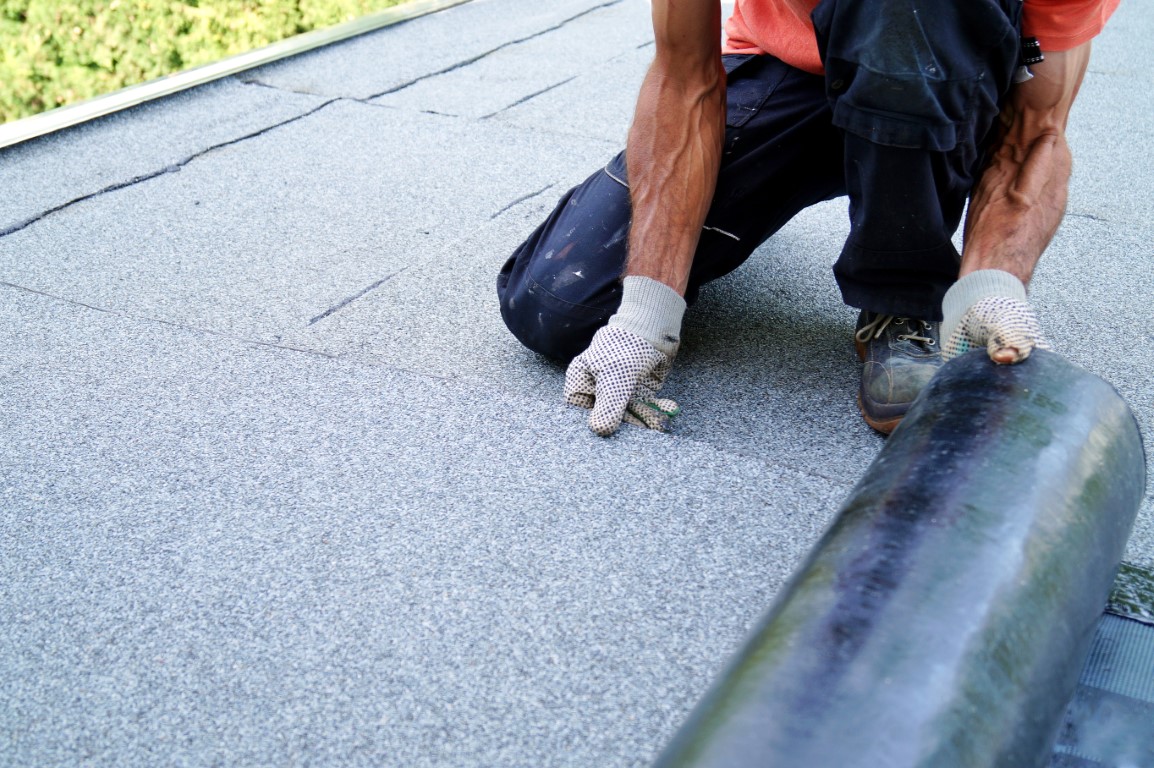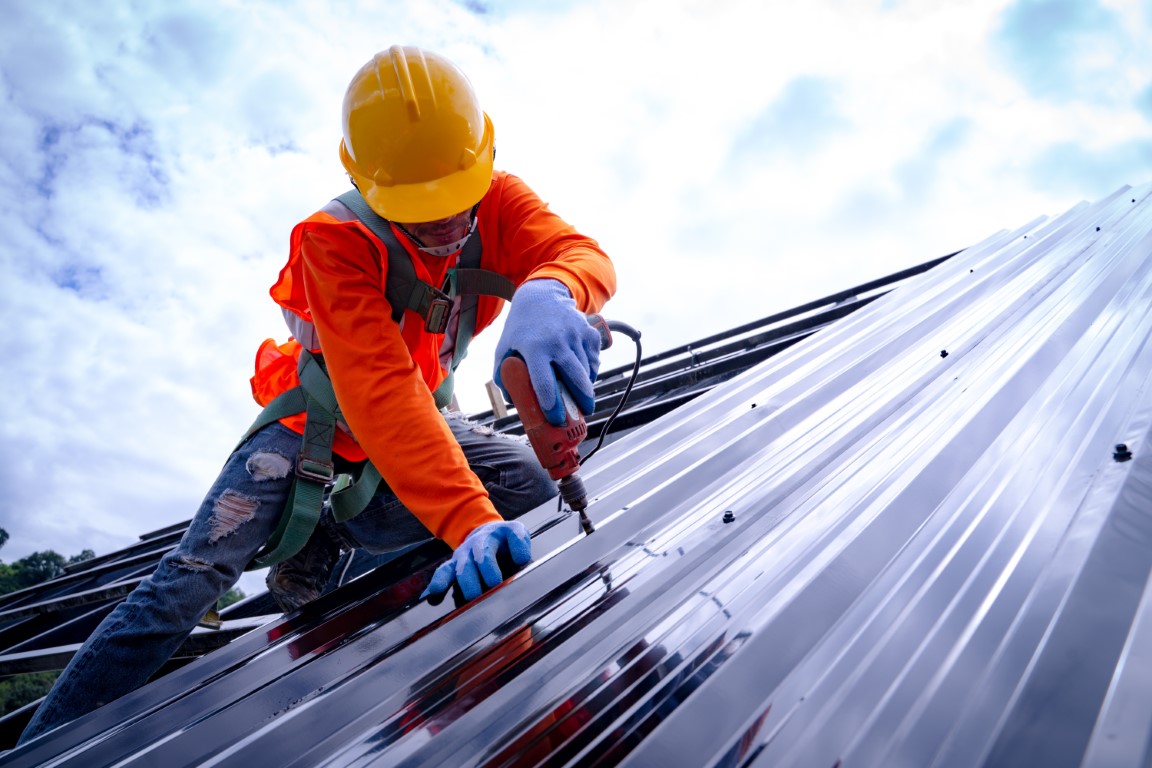Table Of Contents:
Maintenance For Commercial Flat Roofs
Why Is Spring Maintenance So Important?
Spring has sprung, and while many of us are thinking about fresh starts and sunny days ahead, commercial property owners should also be thinking about… you guessed it – booking spring flat roof maintenance services. After a long Canadian winter, your flat roof has likely taken a beating from snow, ice, freeze-thaw cycles, and stormy weather.
Whether you’re managing a commercial building, warehouse, or retail space, this guide will walk you through the must-do maintenance tasks and why they are so important. Let’s dive in.
What Is Included In Professional Roofing Maintenance Services?
1. Membrane Flashing Seam Inspection
Flashings are some of the most vulnerable parts of any flat roofing system. Seams can peel, split, or lift, especially after a freeze-thaw cycle, and water can easily infiltrate these weak points.
How We Do It
We carefully inspect all perimeter flashings, curbs, and penetrations for signs of blistering, cracking, ridging, or separation from the membrane. We also check for open laps or signs of delamination in adhered systems, which can compromise waterproofing.
Why?
If problems are caught early, they can often be repaired with minimal disruption. Left unchecked, they can lead to insulation saturation, interior leaks, and costly replacements.
2. Drain & Scupper Cleaning
Even if you’ve already removed leaves or debris from the surface, internal drain bodies, strainers, and downpipes often hold hidden buildup.
How We Do It
Our team flushes and inspects all drains and scuppers, checking for blockages, proper slope, and signs of wear around drain boots. We’ll let you know if any components need to be repaired or upgraded to keep your drainage system flowing reliably.
Why?
Water that can’t drain properly leads to ponding, which not only shortens membrane life but also increases structural load – particularly dangerous on older buildings.
3. Sheet Metal Flashing Check
Metal flashings (often found at roof edges, wall transitions, or around equipment curbs) are your first line of defense against water intrusion, but they degrade over time due to UV exposure, freeze-thaw expansion, and sealant fatigue.
How We Do It
We inspect these flashings for looseness, corrosion, rust, or failed caulking. Where necessary, we clean and reseal joints using commercial-grade sealants that withstand weather extremes.
Why?
This prevents water from entering behind the membrane and causing hidden structural damage.

4. Skylight & HVAC Unit Assessment
Any penetration through the roof – like skylights, vents, or rooftop HVAC units – is a potential entry point for water. We thoroughly check the base flashings, counter flashings, fasteners, and seals around each unit.
How We Do It
We look for signs of cracking, dry rot, UV deterioration, and movement from vibration or snow shifting. We’ll also inspect any pitch pans, mechanical curbs, and pipe supports for damage or separation.
Why?
If units are not properly supported, they can compress the roof membrane over time, causing leaks – this is something our trained techs are specifically looking for.
5. Thorough Debris Removal
It’s not just about clearing debris, it’s about knowing where debris tends to collect and understanding how it affects water flow and roof performance.
How We Do It
We remove all organic and inorganic material from the roof surface, drains, corners, and around rooftop units and dispose of it off-site.
Why?
This step is critical for preventing moss, mould, and algae growth, especially in shaded areas or low spots where water tends to collect.
6. Detailed Maintenance Report
Transparency is a big part of how we work. After every spring maintenance visit, we provide a detailed inspection report that includes:
- Photos of key areas
- A summary of the work performed
- Identified deficiencies or emerging issues
- Repair recommendations (if needed)
- A recommended maintenance date for the fall
This report becomes part of your roof’s health record, which is not only helpful for planning repairs but can also be used to support warranty claims and insurance documentation if needed.
Bonus: Warranty & Insurance Compliance
Most commercial roofing warranties from major manufacturers like Firestone, Carlisle, or Soprema require regular maintenance to stay valid. Skipping professional inspections can void your coverage, leaving you on the hook for major repair or replacement costs.
Our spring maintenance program is designed to meet those requirements. In fact, many of our clients keep us on a bi-annual schedule (spring and fall) to ensure they remain compliant and avoid warranty disputes.

Why Is Spring Maintenance So Important?
You might be wondering, “Can’t I just wait until something goes wrong?” The short answer: you could, but it’s going to cost you.
1. Winter Can Be Brutal On Your Roof
Snow, ice, and freezing temperatures can cause:
- Membrane shrinkage and cracking
- Ice damming around drains and edges
- Heavy loads on the structure
- Hidden water infiltration
Spring is the best time to uncover and repair winter damage before spring rains add water to the equation.
2. Catch Small Repairs Before They Grow
A small seam opening or clogged drain might not seem like a big deal – until it leads to:
- Interior leaks and tenant complaints
- Mould growth
- Structural damage
- Emergency repair bills
Routine spring maintenance gives you peace of mind, saves you money, and can add years to your roof’s lifespan.
Want to extend your roof’s life, avoid surprise repair bills, and stay covered under warranty? Book online today or give us a call – we’re here to help.



